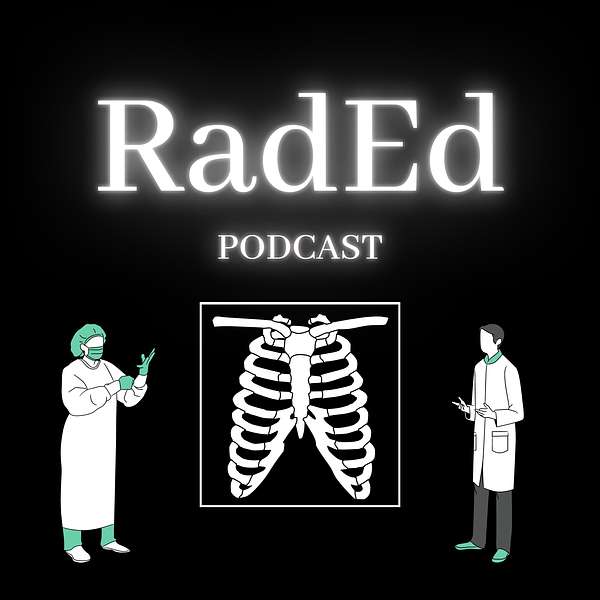
RadEd
This is a podcast about all things radiology designed for medical students, residents, attending radiologists, and anyone else interested! The goal of this podcast is to educate people on and explore the field of radiology. Topics covered include: diagnostic imaging modalities, important radiology concepts/findings, current research topics in the field, technologies and procedures of the field, social and ethical challenges, radiology as a career, interviews with radiologists, and much more!
RadEd
Deep Dive: Nuclear Medicine
- Basic concept: using radioactive (element that remits radiation as it decays) substances coupled with biologically active chemicals to visualize structures (some organs love certain substances- like thyroid and iodine)
- Important physics concepts to know:
- Isotope = element on the periodic table with different # of neutrons but same atomic #
- Radioisotopes: technetium-99m, iodine-131
- Isotope = element on the periodic table with different # of neutrons but same atomic #
- How nuclear medicine actually works: patient is made radioactive, they emit gamma rays, a gamma camera has a detector made of crystal that scintillates in response, computer creates an image, multiple types of scans that utilize this principles
- Types of scans:
- Positron emission tomography (PET) = uses radioisotope that produces positively charged electrons (positrons) that are attached to pharmaceuticals (glucose analog fluorodeoxyglucose [FDG] for example) to image based on metabolic activity
- Single photon emission computed tomography (SPECT) = uses gamma camera to take 2D pictures circling around the patient to create a 3D projection
- Bone scans:
- Screening for metastatic disease, diagnosing early fractures
- Tracer = Technetium-99m (Tc99m) methylene diphosphonate (MDP)
- Deposits best where there is bone turnover
- Metastases, superscan, triple-phase
- Ventilation/perfusion (V/Q) scans:
- Used to diagnose pulmonary embolism when patients cannot undergo CT angiography
- Tracer = Tc99m macroaggregated albumin (MAA)
- Pulmonary embolism = segmental mismatch with normal ventilation but abnormal perfusion scans; probability can be categorized into normal, low, intermediate, high
- Cardiac scans:
- Heart cells with decreased perfusion or viability will take up less tracer
- Usually perform a resting and stress (adenosine, treadmill) scan
- Decreased uptake on stress that corrects on rest suggests ischemia rather than infarct (reversible vs irreversible)
- GI bleed scans:
- Couple Tech-99m to RBCs and scan abdomen
- Bleeds show up as increased uptake of radiotracer in bowel lumen that increases in amount and moves through the bowel over time
- Thyroid scintigraphy:
- Used to assess nodules, Grave’s disease, cancer
- Hyperyhyroid patients will show increased uptake if there is truly an increased amount of thyroid hormone being actively produced
- Performed using radioactive iodine or T99m pertechnetate which both go to the thyroid
- 95% of hot nodules are benign, cold nodules are more concerning for malignancy
- Biliary scans:
- Hepatobiliary iminodiacetic acid (HIDA) scan = couples Tc99m to iminodiacetic acid to assess the hepatobiliary system
- Often used to diagnose acute cholecystitis (very sensitive and specific) or biliary leaks after surgery
- Lack of filling of the gallbladder (photopenic area) suggests obstruction of cystic duct and can diagnose acute cholecystitis
- Can scan the abdomen to see if tracer is outside of biliary system to suggest leak
References: Herring's Learning Radiology, Nuclear Medicine: The Requisites, Radiopaedia, Mandell's CORE Radiology